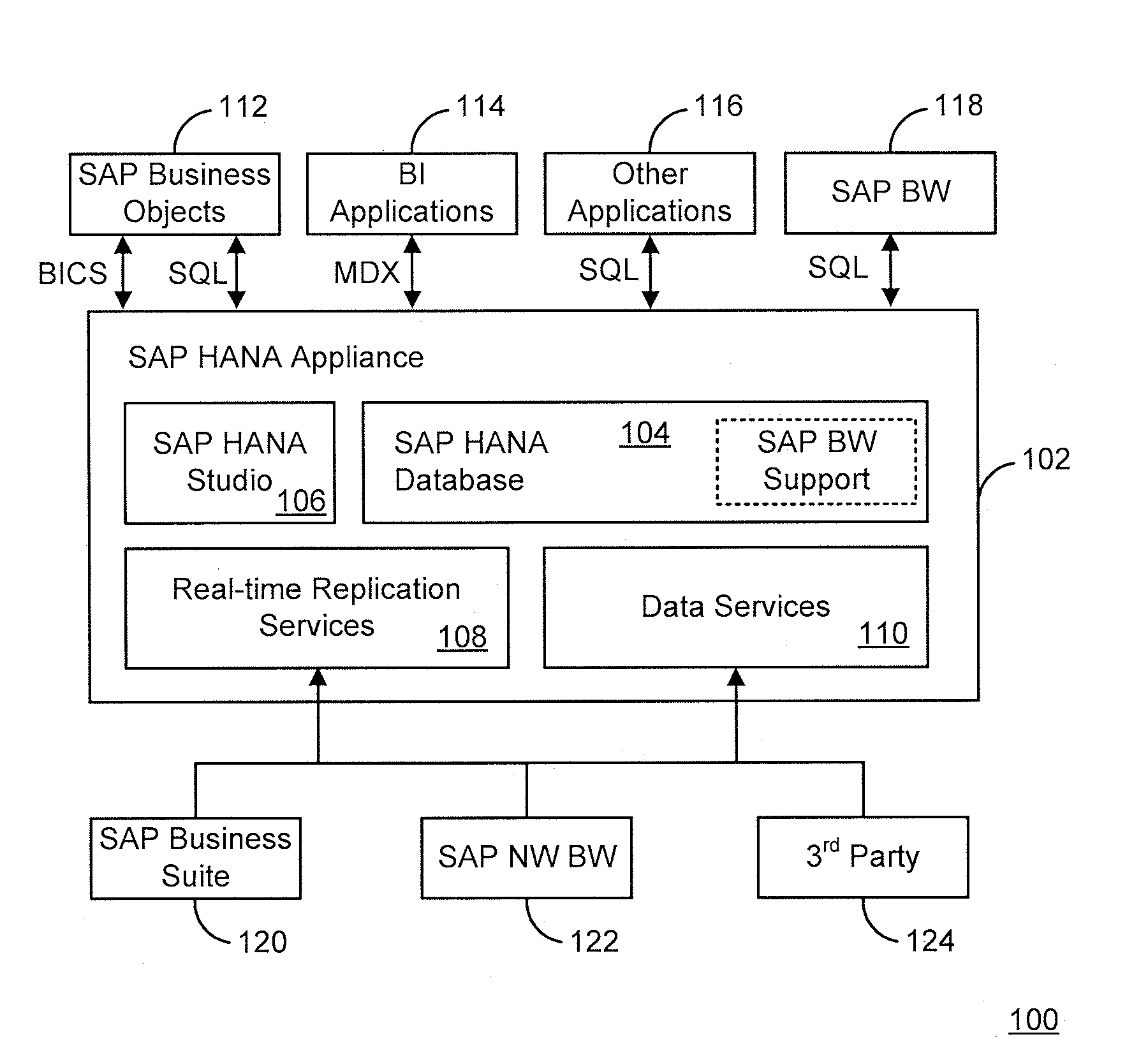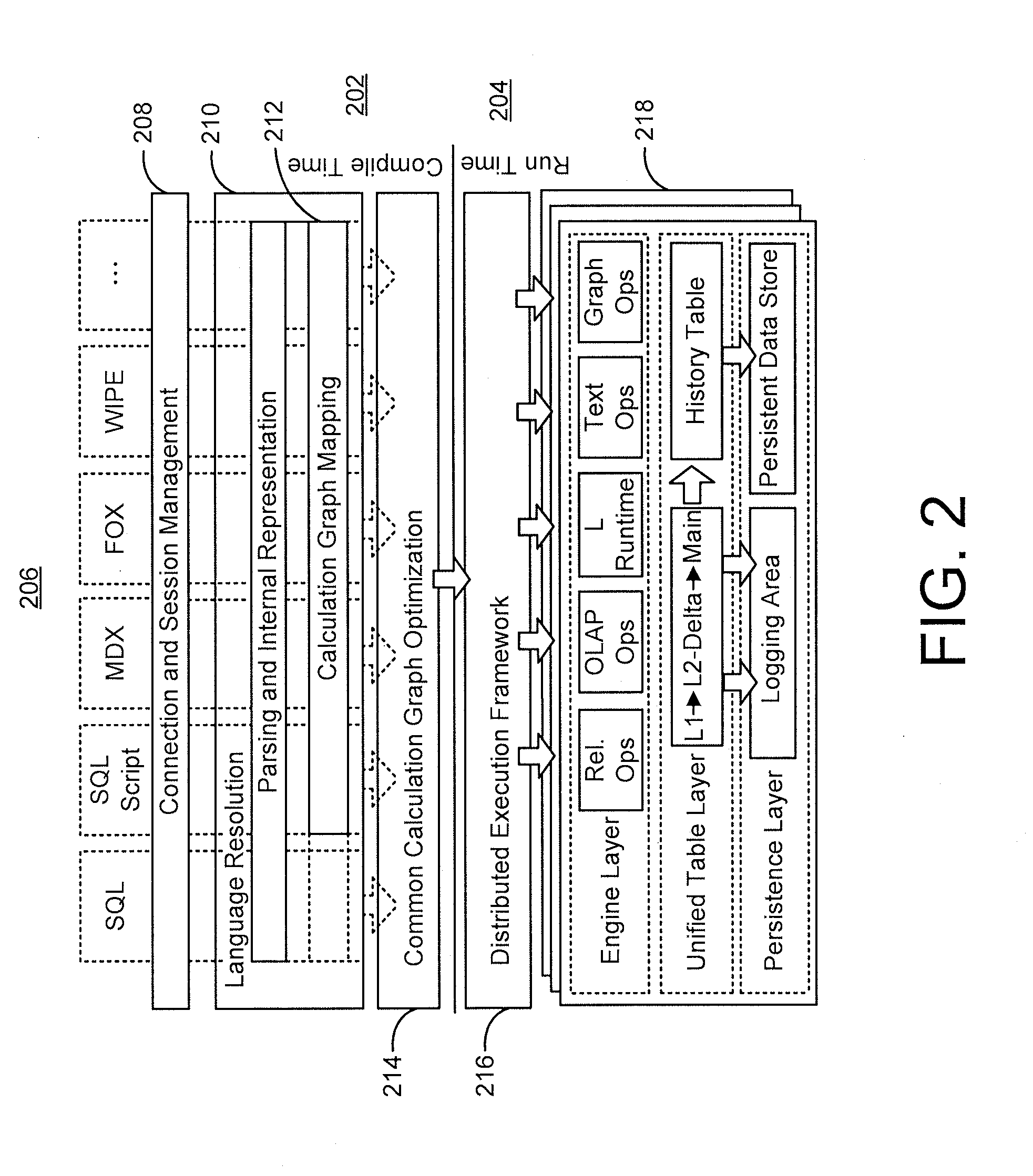Partial merge
a data management and database technology, applied in the field of partial merge, can solve the problems of inability to represent the holistic answer of traditional database management systems, the huge variety of different and in some cases absolutely challenging requirements for a data management layer, and the data management scenarios have become extremely complex and complicated to manag
- Summary
- Abstract
- Description
- Claims
- Application Information
AI Technical Summary
Benefits of technology
Problems solved by technology
Method used
Image
Examples
Embodiment Construction
[0033]FIG. 1 depicts a database system 100, having an in-memory database system (IMDS) 102, such as SAP's HANA database (which is sometimes used interchangeably hereafter as an example). The IMDS 102 includes an in-memory database 104 and a multi-engine query processing environment that offers different data abstractions supporting data of different degrees of structure, from well-structured relational data to irregularly structured data graphs to unstructured text data. This full spectrum of processing engines is based on a common table abstraction as the underlying physical data representation to allow for interoperability and the combination of data of different types. In exemplary implementations, the in-memory database system 102 further includes real-time replication services 108, and data services 110, which can each interface with business suite design environments 112, business warehouse design environments 122, and third party design environments 124.
[0034]The IMDS 102 sup...
PUM
 Login to View More
Login to View More Abstract
Description
Claims
Application Information
 Login to View More
Login to View More - R&D
- Intellectual Property
- Life Sciences
- Materials
- Tech Scout
- Unparalleled Data Quality
- Higher Quality Content
- 60% Fewer Hallucinations
Browse by: Latest US Patents, China's latest patents, Technical Efficacy Thesaurus, Application Domain, Technology Topic, Popular Technical Reports.
© 2025 PatSnap. All rights reserved.Legal|Privacy policy|Modern Slavery Act Transparency Statement|Sitemap|About US| Contact US: help@patsnap.com



